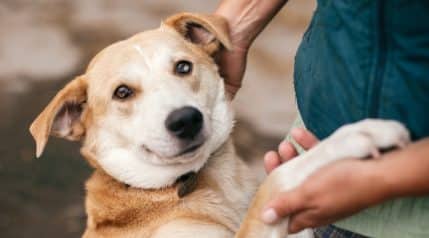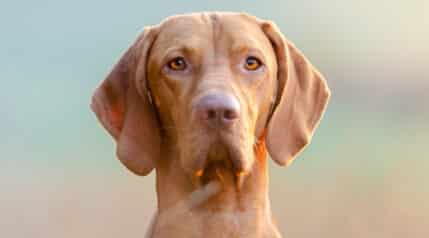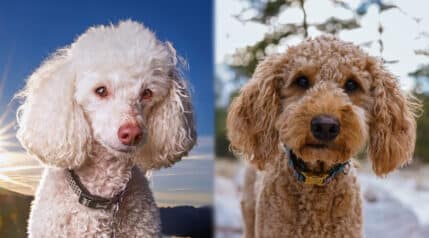More affectionately known as the Terv, the Belgian Tervuren is one of four related Belgian Shepherd dog breeds. However, this canine is described as the most elegant of them all. But don’t let that description lead you to believe they are posh lap dogs. These guys are anything but. They are hardworking and capable of almost any task they are given.
Their intense energy and personality make them unsuitable for some family types. Those seeking an easy-to-train pup, a laidback dog, or families with no previous dog experience should turn away. Instead, very active families with prior dog training experience should do well with this pup. If you think you’ve got what it takes to be a Terv mom or dad, you will find complete loyalty, lots of love, and a comical character for sure.
Our Belgian Tervuren breed guide will provide all the information you need to decide if you are the best owner for this special pup. So, let’s get to it and round up all the Tervuren truths.
Breed History

The four Belgian Shepherd dog breeds are very similar, which is why they often get confused with one another. And, since they are not usually ranked within the top 100 breeds, you might not have met one before.
Since 1959, the American Kennel Club (AKC) has recognized the Belgian Tervuren as a breed in its own right. But this hasn’t always been the case. And still, to this day, the United Kennel Club recognizes them all under the same name – the Belgian Shepherd Dog, which is something to watch out for when searching for a Terv breeder.
The Terv’s journey began in the early 20th century in Belgium. A man named M.F. Corbeel from the town of Tervuren bred black and fawn shepherd dogs. Before the industrial revolution, farmers used hardworking guard dogs to assist them with the day-to-day running of the farm. The Terv’s primary duties were to protect and move stock and guard the property and the human family.
When farmers turned to machinery to run the farm, the Terv was redeployed in police and military jobs, search and rescue, and other assistance roles. They also starred in the British film, ‘The Company of Wolves.’ Where several Tervs played the part of the wolves (much more trainable and set-friendly!)
Tervs first came to America in the 1930s, but they weren’t a huge hit, and they eventually disappeared. A few more were imported into the country in 1953 to establish breeding programs. The American Belgian Tervuren Club (ABTC) began in 1960, shortly after AKC recognition. And breed fanciers have worked tirelessly to establish a healthy and distinct breed ever since.
Temperament

Tervs need a lot of attention, exercise, and stimulation. They are intense doggy characters, and you’ll rarely get a moment alone with one of these guys around. They are original herders too, so they will chase everything that runs in the opposite direction.
Their protective nature features heavily in the family home. They are aloof with strangers and will stand between their family and danger if need be. But they don’t go looking for a fight. Regular visitors will be accepted as friends over time. Still, they will never receive the same affection as a prized family member. So, if you’re looking for a family guardian, the Terv is an excellent choice.
The Terv shares their love with the entire family, unlike their one-person relative, the Malinois. But they usually spend the most time with the adults in the home. After a hard day protecting the family and property, the Terv likes cuddles on the sofa as a reward. They are secretly sensitive pups – just don’t let anyone outside the family unit know. They also don’t like to be left alone for long periods.
Size & Appearance

Males should be undoubtedly masculine, and females should be distinctly feminine. Male Tervs should weigh between 55 and 75 pounds, compared to lighter females who weigh between 45 and 60 pounds. And males typically stand taller, between 24 and 26 inches, from paw to shoulder, compared to their female counterparts at 22 to 24 inches tall.
Tervs look a lot like long-haired German Shepherds to the untrained eye, but there are distinct differences. Their muzzles are well-chiseled and narrower, similar to the Belgian Malinois, and their topline should be straight and firm too. Their ears are also triangular and almost always stiff. They also carry their head with pride and always have an alert demeanor.
If you want to compete with your Terv in the show ring, they must abide by the Belgian Tervuren breed standard. Which essentially sets out what a fine specimen should be. If you are looking for a family pet, these strict guidelines aren’t essential.
Coat & Colors

Their coat is how Tervs are distinguished from other Belgian Shepherd dog breeds. The differences between theirs and their relative’s coats are:
- Belgian Tervuren – Long-haired, blackened fawn, or red
- Belgian Sheepdog – Long-haired, black
- Belgian Malinois – Short-haired
- Belgian Laekenois – Wire-haired
The Terv has a double coat, and although it is described as long-haired, it is technically a medium-length coat. The outer coat has a middle-ground texture in that it is not soft or wiry. It is straight and abundant, protecting the dense undercoat from the elements. The hair is short around the head, outer ears, and front part of the legs.
They also have something called ornamentation, which is thicker, longer hair around certain parts of the body. The most notable is the longer hair around the neck, mostly on males, sometimes referred to as a collarette. They also have bushier hair around the breeches, back of the forearm, and tail.
The Terv sports a rich fawn to mahogany coat with a black overlay. Usually, Terv coats are double pigmented, where the tips of the fawn hairs are black. And Tervurens tend to become darker as they grow older, too, especially around the shoulders and ribs. Most Tervs also sport a black mask with blackened ears, which is preferred in the show ring.
Exercise

This is a high-energy working dog breed that needs between 60 and 90 minutes of daily exercise. Without fail! Not all families can offer them work, and that is okay. But you have to provide them with intense activities. If you cannot offer this, or only can on some days of the week, the Terv is not the dog for you. Otherwise, you’ll find a miserable pup on your hands. Their breed standard describes them as ‘seemingly never tiring.’
And the exercise doesn’t stop there. Tervs need plenty of playtime at home in between their outdoor adventures, as well as lots of mental stimulation. Including solo playtime and interactive, challenging brain games. Expect to spend several hours a day burning off those energetic beans of theirs. Invest in a variety of toys, especially durable chew toys, and toys that they can chase.
Tervs are natural herding dogs who will chase everything that runs from them. They’ll chase animals, (sometimes) young children, and dangerous things like cyclists and vehicles. So keep everyone and your dog safe by keeping them under control. Even if you don’t work them as herding dogs, they have herding instincts that they’ll listen to over your command.
Living Requirements

These guys do best in homes with access to a backyard. Small apartments are not recommended, although it could work in some circumstances with a lot of exercise. And like you should keep them on the leash, your backyard needs to be enclosed with tall, secure fences.
The Terv does well with other household pets when brought up with them. Bringing a new animal into their home might not go down so well with their protective and herding nature. They get on well with all family members and make great canine siblings for children. Just be sure to supervise them and teach your kiddos how to respect a dog’s boundaries.
Training

When it comes to training, their intelligence can be a good or a bad thing. If you have previous dog training experience and know-how to get the best from an intensely intelligent dog, it’ll be a breeze. But if you are a novice dog owner, intelligent dogs will quickly become bored and start to ignore you.
Working dog breeds are also known to have a stubborn streak. This is why confident and experienced dog owners should take on the Terv. So you need to be consistent with your training and begin straight away. Establish the boundaries and ensure no one deviates from them, be that dog or human. And get everyone on board, even the kids.
Positive reinforcement training is the best way to train your Terv. Because they are herding dogs, a favorite reward of theirs is a ball to chase. Praise from their master and yummy treats go down well too. Not only do all dogs respond better to reward-based training, but sensitive dogs such as the Terv can respond negatively to harsh training.
All dogs need socialization training as puppies, but it’s crucial for dogs with a natural protective streak. Otherwise, they’ll become overprotective, which can lead to dangerous behaviors. Take them down to your local dog park as soon as you can to mix them with other dogs. And invite visitors over to your home regularly to get them accustomed to new people.
As the Terv is a sensitive dog who doesn’t like to be left alone for too long, another essential aspect of training is crate training. A lot of people see crates as doggy prisons, but this is not the case. Dogs naturally crave shelter, so a crate will soothe their anxieties when you have to leave them. Plus, it means that they cannot get up to mischief when you’re not there to supervise.
Health

This dog is a relatively healthy breed. They enjoy an average lifespan of 12 to 14 years, which is excellent compared to some similarly-sized dog breeds. But like all purebreds, they are genetically predisposed to specific health conditions. To ward off unexpected vet expenses, you could consider signing up for pet health insurance. Now it the time, when your dog is young. As he ages, he is more likely to add new health concerns and injuries to his medical resume that could leave him with no coverage for pre-existing conditions.
Working with a responsible breeder, keeping your dog fit with regular exercise, and keeping up to date with health checks are the best ways to keep them in great condition. Below we have listed some of the leading health concerns that affect the Terv bloodline, so be sure to ask your breeder about them.
Hip & Elbow Dysplasia
Hip and elbow dysplasia are among the most common skeletal problems in the canine world. It can be inherited from parents, so be sure to ask your breeder for proof of good hip and elbow scores from both parents. It can also occur when the skeleton grows too rapidly during the developmental stage. Look out for symptoms such as general pain, lameness, and struggling to sit, stand, and climb.
Thyroid Concerns
The Terv is predisposed to hypothyroidism, where their body does not produce enough thyroid hormone. It can lead to other health problems, including epilepsy, weight gain, skin diseases, hair loss, and behavioral changes. When diagnosed, it can be managed with a daily hormone supplement.
Eye Conditions
These are also common in many dog breeds, and the Terv is no exception. Thankfully, progressive retinal atrophy (PRA) is the primary concern to watch out for. Still, it isn’t as widespread in Tervs compared to other breeds. It is a degenerative disease of the retina, which can eventually lead to blindness if left untreated. If you notice light sensitivity or your pup is bumping into things, you should take them to the vet.
Nutrition

How much they eat depends on their size, age, and activity levels. Always follow the package instructions according to their weight to avoid overfeeding your pup. The number one rule of doggy nutrition is to feed them the best quality nutrition you can afford, as it will help maintain a healthy lifestyle.
Another essential factor to remember when it comes to your Terv’s diet is to feed them food designed specifically for large breeds. This is particularly important during the puppy stage. The nutrition is optimized for rapidly growing dogs, decreasing the chances of developing joint dysplasia mentioned above.
The Terv is prone to gastric dilatation-volvulus (GDV), also known as bloat. It occurs when the stomach twists and fills with gas, putting strain on other organs and leading to shock. It can be deadly, so be sure to familiarize yourself with the symptoms and get your dog to a vet immediately. To decrease the chances of this occurring, split their daily food allowance into at least two different meal sittings, and avoid exercise immediately before or after mealtime.
Grooming

Tervies need to be brushed twice a week with a pin and a slicker brush throughout the year. During the shedding seasons, they will need more regular brushing, which takes a bit longer. An undercoat rake will be required to help you manage the shedding.
Their teeth need to be brushed several times a week with a doggy-designed toothpaste. Human toothpaste is not suitable for dogs. Trim their nails once a month or whenever you can hear them clipping on the floor. Long nails can lead to surprisingly painful pads, which are not compatible with the incredibly active Tervuren.
Thankfully, their grooming regimes are not as time-consuming compared to some other breeds. Still, to make the grooming schedule as easy as possible, be sure to expose them to it from a young age. Make their first experiences with a brush or in the tub pleasant, and turn them into a fun and rewarding game to please their inquisitive nature.
Breeders & Puppy Costs

Because they are rare, expect to travel to find a responsible breeder and be put on a waiting list. But remember, good things come to those who wait. A great place to start your breeder research is on the AKC’s Belgian Tervuren breeder page. But be extra diligent and research them yourself too.
The average price for a puppy from a reputable breeder typically falls between $1,000 and $3,000. If you find a puppy priced lower than this, it could signify that the breeder is not responsible. Or worse, part of a puppy mill that churns out sick and unhealthy puppies.
It’s not just the initial puppy payment that you need to consider. You also need to puppy-proof your home and kit it out with everything that a puppy needs. And also, remember the ongoing living expenses, such as medical treatment, insurance, and food, to name just a few. Owning a dog is not just a privilege. It’s a huge responsibility that requires financial resources.
Rescues & Shelters

Buying a puppy from a breeder is not the best option for every family. Some families also prefer to rescue a dog in need of a forever home.
There are two ways to start your rescue journey, and local rescue shelters are the first option. If you cannot see a Terv, speak to the staff, who might be able to point you in the direction of another local rescue shelter that does have one. Alternatively, the Belgian Tervuren Rescue Inc.’s website details how the adoption process works, and they rehome Tervs nationwide.
As Family Pets
In general, these black and brown pups are:
- A medium to large dog who prefers to live in homes with fenced yards. Otherwise, they can become bored and frustrated.
- A very active working dog breed that needs to be exercised for a minimum of 60 to 90 minutes every day.
- Smart and require mental stimulation throughout the day so they don’t get into mischief.
- Natural family guardians who are aloof with strangers.
- Affectionate with their human pack and love to snuggle, especially with the adults.
- Intelligent dogs and should be trained by someone who knows how to channel their energy to get the best out of them.
- Friendly and can live with children and other pets if raised alongside them.
- Not always welcoming to new pets in the home.
- Natural herders and will chase everything that moves.
- Fantastic exercise partner and lots of fun too.
Final Thoughts
The Belgian Tervuren is a special dog who requires an active family who can guarantee at least 60 to 90 minutes of intense exercise a day. A simple stroll around the block will not suffice for these pups. They also need an experienced owner who can raise them to be polite and bring out the best in them.
If you can provide them with what they need, they will repay the favor in protection, fun, loyalty, and much more. Sure, they might be sensitive doggos that need nighttime cuddles and constant companionship, but they won’t let would-be intruders know that. So, if you’re looking for a four-legged, hairy bestie to provide all the above and more, the Belgian Tervuren could be the pup for you.





